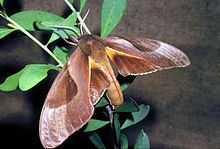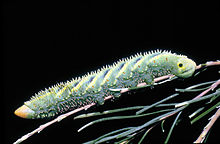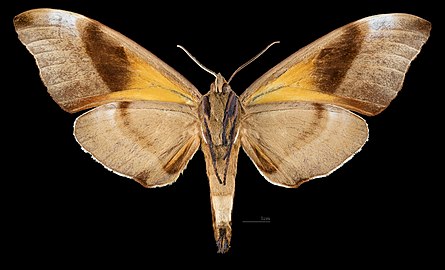| Coequosa triangularis | |
|---|---|

| |

| |
| Scientific classification | |
| Domain: | Eukaryota |
| Kingdom: | Animalia |
| Phylum: | Arthropoda |
| Class: | Insecta |
| Order: | Lepidoptera |
| Family: | Sphingidae |
| Genus: | Coequosa |
| Species: | C. triangularis |
| Binomial name | |
| Coequosa triangularis (Donovan, 1805) | |
| Synonyms | |
| |
Coequosa triangularis, the double-headed hawk moth, is a moth of the family Sphingidae.
Distribution
It is known from the Australian states of New South Wales and Queensland.
Description
The species was first described by Edward Donovan in 1805. The wingspan is about 130 mm, making it Australia's largest hawk moth. Adults are yellow and brown with broad wavy markings.
Biology
The larvae feed on Banksia ericifolia, Grevillea robusta, Hakea dactyloides, Macadamia integrifolia, Persoonia levis and Stenocarpus sinuatus. Full-grown larvae are about 100 mm long.
References
- "CATE Creating a Taxonomic eScience - Sphingidae". Cate-sphingidae.org. Archived from the original on 2012-12-20. Retrieved 2011-11-01.
- Herbison-Evans, Don & Crossley, Stella (15 December 2013). "Coequosa triangularis (Donovan, 1805) Double Headed Hawk Moth". Australian Caterpillars and their Butterflies and Moths. Retrieved 12 December 2018.
| Taxon identifiers | |
|---|---|
| Coequosa triangularis | |
This Smerinthini-related article is a stub. You can help Misplaced Pages by expanding it. |

